Camino Francés: Pamplona to Puente La Reina - Stage 4

By: Simon Kemp, Editor
Stage 4 of the Camino Francés takes pilgrims on a 24 km journey from the bustling city of Pamplona to the charming town of Puente la Reina. The route is marked by diverse terrain, including hills, forests, and vineyards. Along the way, walkers will encounter a range of cultural and historical landmarks, including the famous Plaza del Castillo in Pamplona and the iconic Puente la Reina bridge. This stage is also known for its alternative routes, including the scenic route through the Alto del Perdón.
Pamplona to Puente La Reina Camino Route Map
Camino Francés Diary: Route segment: 4
Saturday 30th September 2000
Of course, there was a fiesta last night and the Pamplonians were celebrating all night so again it was a fairly sleepless night. Olivia and Daniel have not stayed at the refuge as she is meeting her boyfriend and they all go to a hotel. As I am walking past the university on my way to “Cizor Minor” I spot them again. They have agreed to meet Geordie at a bridge up the road.
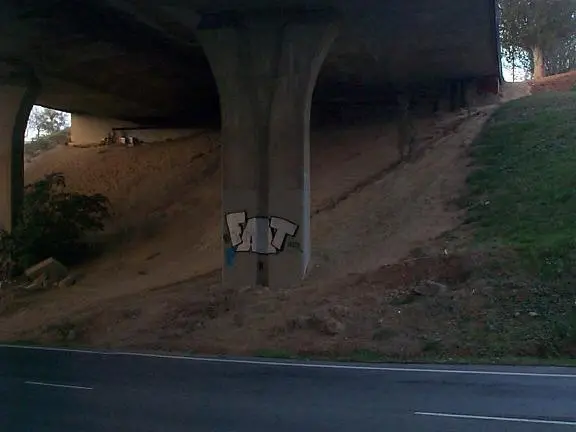
I do not wait for them as I know full well that they will catch up and pass me soon enough. At Cizor Minor, there is a bar open and I stop for a “caffe con leche”. There I meet the Danish girl, Lisa for the first time, talking to a guy I have seen before but who’s name I never can remember. It is common to ask folk you meet on the walk, when you get to know them, why they are walking it.
She tells me that she was doing a doctor’s degree but that after some practical training she decided that it was not for her. She is here just to “find herself”, a common reply. I am sure that a lot of people walking the Camino Francés do not really know why they are there and need to come up with some rational reason.
Eventually Olivia and the others turn up and we sit and have coffee together. So I say goodbye and outside immediately meet a silver haired French woman, Theresa. She seems a bit crazy to me but we seem to have a rapport and we walk for quite some distance together. She says that she is or was a Buddhist nun and is doing the walk for its spiritual nature. She is into energy and its healing effects on people.
We talk about the American ladies who were staying at the refuge in Pamplona and discuss the use of the energy stones, which the daughter placed around the bed her mother was sleeping in. This woman is in her sixties and has several daughters my age including one who is living with a Scotsman, so we have something in common. This woman laughs a lot but the laugh has a maniacal quality to it.
I remember soon that the Dalai Lama also laughs all the time and at seemingly wrong moments so I remember not to judge the woman for it. She has a fondness for singing and I often hear her singing at the various refuges where our paths cross.
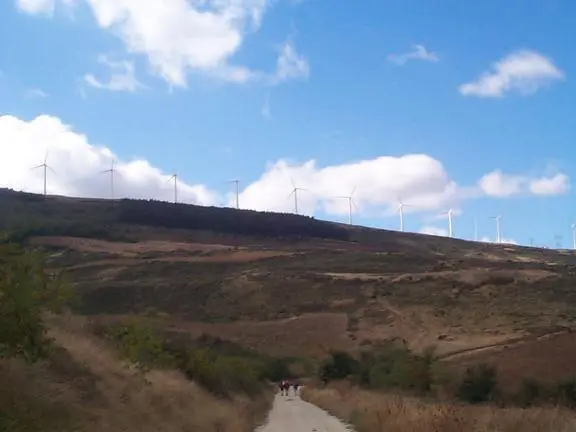
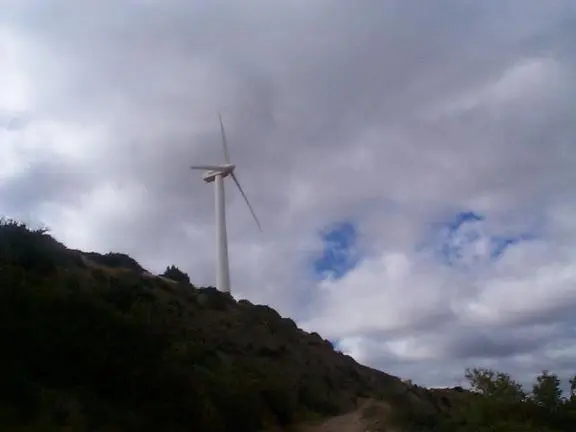
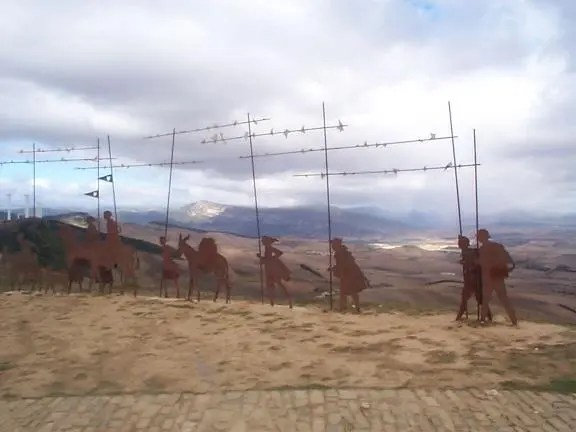
Olivia and the others have stopped at the top of the pass and are sorting out their footwear. Geordie makes a comment about “Muchos kilometros” when we look for Puente La Reina on the horizon. The path down is very bad and they speed ahead while I do my usual very slow descent.
I have great difficulty walking down this kind of slope and it takes me ages. I have never felt particularly sure on my feet with these boots and I don’t want to break a leg trying to go down too fast. It is raining slightly and the stones are slippery. This is going to be a lonely day for me.
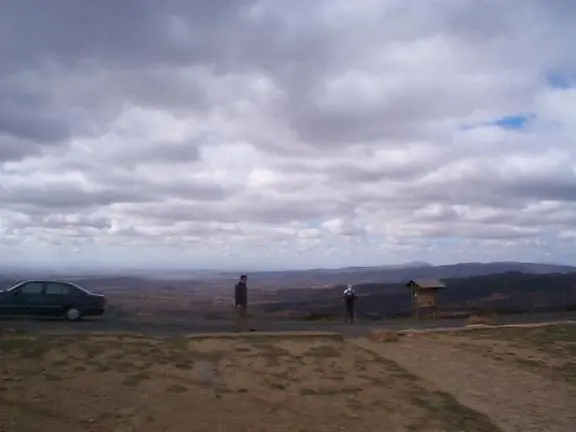
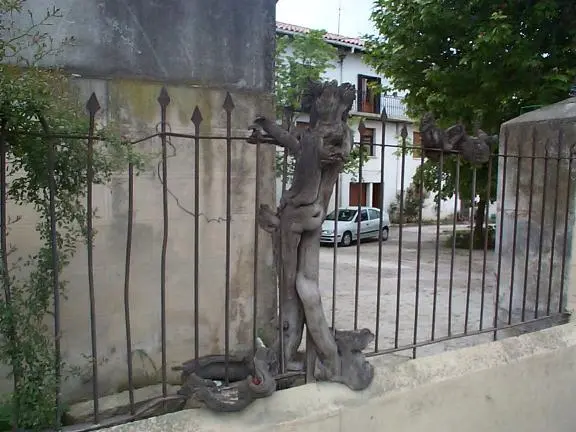
I eventually reach Puente La Reina. The refuge here is the first to have triple bunks and the room is very dark and dirty. I do not look forward to staying here. I wait an hour or two and hear that there is another refuge here. I decide to go looking for it and discover that it is on the other side of town up on a hill. This refuge is still not fully finished but it looks and feels much better than the other one.
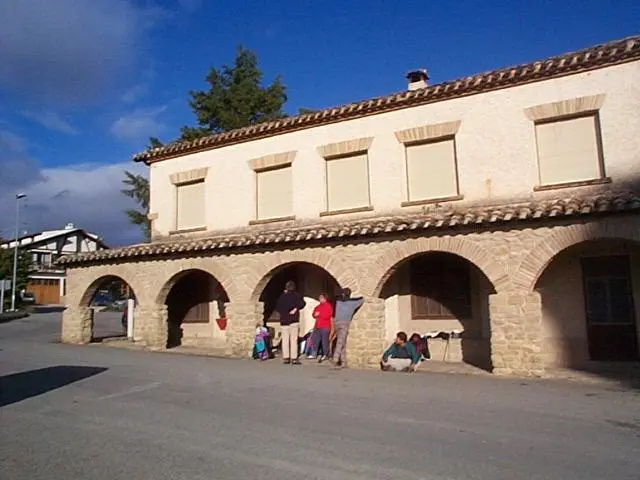
By the way, that dirty refuge no longer exists and has been completely renovated during 2001 and greatly expanded. The old one occupied only a tiny part of the building it was in and the whole building is now occupied with a new refuge.
However it is still not a good place to stay as the beds squeak terribly at even the slightest movement, like breathing. In addition, the one that Collienne and I stayed at is now completely finished.
The town Puente La Reina is actually the meeting point of several Camino paths and tends to be very busy indeed during the summer. So the locals have been forced to build massive new facilities to support the number of pilgrims wanting to stay there.
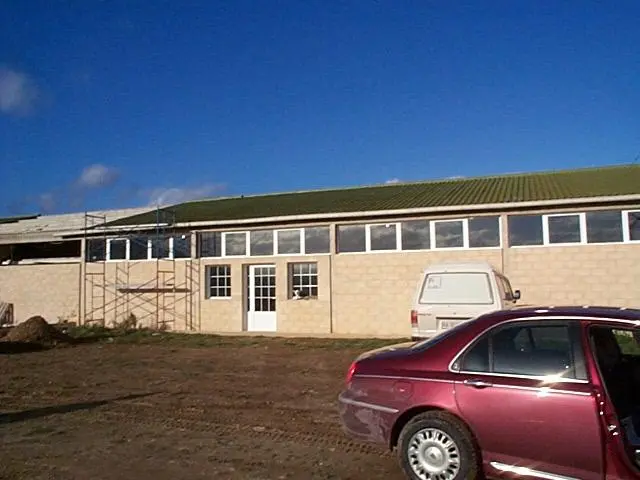
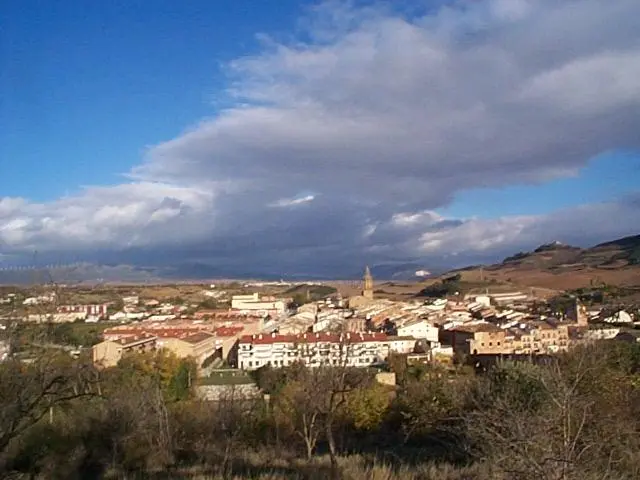
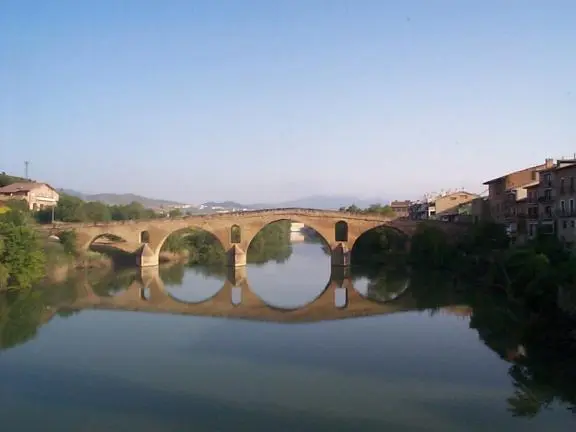
Departure point: Pamplona
Pamplona is a beautiful city located in the Navarre region of northern Spain. Known worldwide for its running of the bulls during the San Fermín festival, Pamplona has much more to offer visitors, from its rich history to its cultural attractions and excellent cuisine.
Location and History
Pamplona is located in northern Spain, close to the Pyrenees mountains and the border with France. The city’s history dates back to the Roman Empire, when it was an important military outpost along the route that connected Rome with the Atlantic Ocean. The city was later a significant center of trade during the Middle Ages and played a crucial role in the Spanish War of Independence in the early 19th century.
Points of Interest
Pamplona has a wide range of attractions for visitors to enjoy. One of the most significant is the Citadel, a 16th-century fortress that was built to defend the city from invading forces. The Citadel is a star-shaped fortress that was one of the most advanced military structures of its time. Visitors can explore the fortress’s bastions, ramparts, and tunnels, which offer stunning views of the city and surrounding landscapes.
Another must-visit attraction is the Cathedral of Santa Maria, a beautiful Gothic-style church that dates back to the 14th century. The cathedral is home to many treasures, including the famous altarpiece by Flemish artist Jan van Eyck. Visitors can also admire the cathedral’s intricate stonework, stained-glass windows, and impressive Baroque organ.
The city’s historic quarter, known as the Casco Viejo, is a charming and vibrant district characterized by narrow streets, traditional buildings, and lively plazas. Visitors can explore the quarter’s many shops, bars, and restaurants, which offer a range of traditional cuisine and local specialties. The Plaza del Castillo, located in the heart of the Casco Viejo, is a beautiful square surrounded by elegant buildings and outdoor cafes. It’s the perfect spot to enjoy a cup of coffee or a glass of wine while people-watching.
San Fermín Festival

The San Fermín festival is one of Pamplona’s most famous events, attracting thousands of visitors from around the world every July. The festival is a celebration of the city’s patron saint, San Fermín, and features a range of events and activities, including traditional music and dance performances, bullfighting, and the running of the bulls.
During the running of the bulls, participants run ahead of a group of bulls that are released from a corral and chase after them through the streets of the city. The event is considered dangerous and has resulted in many injuries over the years, but it remains a popular tradition and a significant part of Pamplona’s cultural heritage.
Cuisine
Pamplona is renowned for its excellent cuisine, which features a range of local specialties and traditional dishes. One of the most famous is the pintxo, a small snack typically eaten with drinks. Pintxos can be found in many bars and restaurants throughout the city, and visitors can try a range of flavors and varieties, from classic combinations like tortilla de patatas to innovative creations like black squid ink and quail egg.
Other local specialties include lamb chops, grilled vegetables, and chorizo sausage. Pamplona is also famous for its wine, which is produced in the nearby Navarra region. Visitors can sample a range of red, white, and rosé wines, many of which have won international awards.
Pamplona is a vibrant and fascinating city that offers a range of attractions and activities for visitors. Whether you’re interested in history, culture, or cuisine, Pamplona has something to offer. From the stunning Citadel and Cathedral to the lively Casco Viejo and the excitement of the San Fermín festival, there’s always something to see and do in this beautiful city. Whether you’re exploring the narrow streets of the old quarter, enjoying a glass of wine in a sunny plaza, or admiring the views from the ramparts of the fortress, Pamplona is a destination that is sure to leave a lasting impression on visitors. With its rich history, vibrant culture, and excellent cuisine, Pamplona is a city that should not be missed.
Route Description
The fourth stage of the Camino Francés spans approximately 24 kilometers from the vibrant city of Pamplona to the historic town of Puente la Reina. The route passes through several charming towns and villages, each with their unique cultural and historical significance.
The route begins in the heart of Pamplona, a city famous for its Running of the Bulls festival. The route then heads west, following the Camino Francés through the city’s winding streets before emerging into the surrounding countryside. Pilgrims will encounter diverse terrain, including rolling hills, open fields, and quaint forests, as well as several steep ascents and descents.
One of the most notable landmarks along the route is the iconic Alto del Perdón, a mountain pass that reaches an elevation of 790 meters above sea level. The climb to the top is steep, but the effort is well worth it, as the summit offers breathtaking views of the surrounding landscape. At the top of Alto del Perdón, pilgrims will also find a striking metal sculpture of medieval pilgrims, which serves as a poignant reminder of the route’s long history.
As the route continues towards Puente la Reina, pilgrims will pass through several small villages, including Cizur Menor and Zariquiegui, each with their unique charm and character. In these villages, pilgrims can find plenty of services and amenities, including cafes, restaurants, and shops selling supplies for the journey ahead.
Finally, the route arrives at the historic town of Puente la Reina, which takes its name from the beautiful 11th-century bridge that spans the Rio Arga. The bridge is a UNESCO World Heritage Site and a beautiful example of Romanesque architecture. The town itself is also steeped in history, with several important landmarks, including the Church of Santiago, which dates back to the 12th century.
Overall, the fourth stage of the Camino Francés is a beautiful and rewarding journey, with a diverse landscape, significant landmarks, and charming towns and villages along the way.
Points of Interest
- Alto del Perdón, a mountain pass offering stunning panoramic views
- Romanesque Church of San Miguel in Zariquiegui
- Puente la Reina bridge, a UNESCO World Heritage Site
Alternative Routes
Pilgrims may choose to take an alternative route from Pamplona to Puente la Reina, known as the Valcarlos route. This route is longer and more challenging, covering a distance of approximately 31 kilometers and including a steep ascent over the Pyrenees Mountains. However, it offers stunning scenery and the opportunity to explore the historic town of Roncesvalles.
Best Time of Year To Walk from Pamplona to Puente la Reina
The best time of year to walk Stage 4 of the Camino Francés, from Pamplona to Puente la Reina, is in the spring (April-May) or fall (September-October) when the weather is mild. Summer can be very hot, and winter can bring snow and icy conditions.
Tips and Recommendations
Pilgrims walking the fourth stage of the Camino Francés should be prepared for diverse terrain, including steep ascents and descents. Proper footwear is essential, and pilgrims should ensure that they have enough water and snacks for the journey. The wine fountain of Irache is a popular stop along the way, but pilgrims should be aware that drinking too much wine can be dangerous, especially when walking long distances. As with all stages of the Camino Francés, it is essential to stay hydrated and take breaks as needed.
Destination: Puente La Reina

Puente La Reina is a charming town located in the Navarre region of northern Spain. It is situated on the Camino de Santiago pilgrimage route and has a rich history, beautiful architecture, and a range of attractions for visitors to enjoy.
Location and History
Puente La Reina is located about 20 kilometers southwest of Pamplona and is known as the “Queen’s Bridge” due to the famous bridge that spans the Arga River in the town center. The town has a long and fascinating history dating back to the 11th century, when it was founded by Queen Doña Mayor as a strategic point along the Camino de Santiago. The town’s location made it an important center of trade during the Middle Ages, and its rich cultural heritage is still evident in its well-preserved buildings and landmarks.
Points of Interest
Puente La Reina offers a range of attractions for visitors to enjoy. One of the most notable is the 11th-century Romanesque bridge that gives the town its name. The bridge is an iconic landmark on the Camino de Santiago and has been the subject of many paintings and photographs over the years. Visitors can walk across the bridge and take in the beautiful views of the surrounding landscapes and the town center.
The town’s historic center is another must-visit attraction, characterized by narrow streets, traditional buildings, and beautiful architecture. Visitors can explore the many shops, restaurants, and cafes in the town center, which offer a range of local specialties and traditional cuisine. The Church of Santiago is another notable landmark, a beautiful Romanesque church that dates back to the 12th century and features stunning stonework and intricate carvings.
Another interesting attraction in Puente La Reina is the Pilgrim’s Fountain, a beautiful fountain that was built in the 17th century to provide water to weary pilgrims. The fountain is located in the town square and features a statue of Saint James, the patron saint of the Camino de Santiago.
Camino-Related Services
As a stop on the Camino de Santiago pilgrimage route, Puente La Reina offers a range of services and amenities for pilgrims. Accommodation options include hostels, hotels, and private rooms, with many specifically catering to pilgrims. Visitors can also find restaurants and cafes serving traditional cuisine, shops selling souvenirs and other essentials, and medical facilities and pharmacies.
One of the most interesting Camino-related services in Puente La Reina is the Pilgrim’s Office, which provides information and assistance to pilgrims on the Camino de Santiago. The office can help with everything from obtaining the Pilgrim’s Passport to arranging transportation and accommodation along the route.
Festivals and Events
Puente La Reina is known for its lively festivals and events, which take place throughout the year. One of the most popular is the annual Medieval Fair, a three-day event that celebrates the town’s cultural heritage and features reenactments, markets, and live music. The fair takes place in early September and attracts visitors from all over the region.
Another popular event in Puente La Reina is the Fiesta de San Pedro, a religious festival that takes place in late June. The festival features a procession, live music, and a range of traditional activities and celebrations.
Puente La Reina is a beautiful and historically rich town that serves as an important stop on the Camino de Santiago pilgrimage route. Its location on the Arga River, range of attractions, and variety of services make it a popular destination for visitors. Whether you are a pilgrim embarking on the Camino or a tourist exploring the region, Puente La Reina is a town worth visiting. The combination of stunning natural scenery, historical significance, and cultural attractions make it a unique and memorable destination.